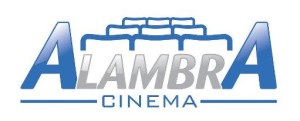Right right Here, the framework that is two-step us to close out that Lanier perfected their appeal inside the specific capability. First, Lanier’s October 10 notice of appeal efficiently complied with Rule 3(c)(1)’s demands. With regards to the guideline’s first requirement, that the appellant specify the events using appeal, Lanier known “Lanier Law, et al.,” and in addition referenced the “Lanier Defendants,” which he’d utilized to incorporate himself through the litigation. Also the region court had utilized the “Lanier Defendants” to suggest Lanier himself. 10 hence, Lanier’s utilization of that phrase to add himself ended up being adequately clear so that he functionally complied because of the guideline’s requirement. Lanier additionally complied utilizing the guideline’s second and 3rd prongs, which need the appellant to see your order from where he appeals in addition to court to which he appeals.
Lanier contends that the declarations made available from the FTC are inadmissible at test simply because they neglect to fit within one of many hearsay exceptions. He contends that even though the declarants testified at trial, the declarations on their own would stay inadmissible, and so those statements shouldn’t be considered during the summary judgment stage. However the appropriate real question is perhaps maybe not whether or not the declarations on their own would ever be admissible—they may possibly not be. Rather, the real question is whether or not the proof included within those declarations could possibly be presented in an admissible type at test. Lanier does not address whether, if the affiants repeated their statements in court, that testimony could be admissible. Lanier consequently does not raise a appropriate challenge to the declarations provided by the FTC and relied upon by the region court.
Hence, we hold that the region court would not abuse its discernment in depending on such proof in determining the summary judgment motion.
Lanier next argues that the district court improperly relied on declarations from customers and lawyers that has “of counsel” relationships with Lanier Law or the D.C. companies because their testimony had been unreliable. Based on Lanier, these declarations must have been discredited because of the FTC solicitors’ participation in planning those papers. With regards to the customer declarations, Lanier contends that statements by “consumers shopping for a” that is payday inherently untrustworthy and therefore “should be disregarded.” Appellant’s Br. at 32. likewise, Lanier contends the region court wrongly assumed that the “of counsel” declarations had been real, despite “untruthful conditions appearing on their face.” Id. at 34-35. 11
But also let’s assume that Lanier’s issues concerning the customer and lawyer declarations are warranted, he has got maybe maybe not founded an authentic dilemma of material reality. To beat summary judgment, Lanier must indicate “specific facts” so that “a reasonable jury could get back a verdict” in Lanier’s favor. Anderson, 477 U.S. at 248 (interior quote markings omitted). a basic objection that an opposing celebration’s proof is amazing, just like the one Lanier raises right right here, is inadequate to overcome summary judgment. Lanier has cited no authority payday loans in Franklin with no credit check that an event can make a disputed problem of product reality by just asserting that the party that is opposing declarations are untrustworthy.
right right Here, although Lanier tries to discredit the party that is opposing evidence, he provides no evidence that could help a choosing in their benefit. Since the region court noted, he neglected to “present proof of any customer whom received that loan modification considerably reducing their payment that is monthly or otherwise ended up being pleased with Defendants’ solutions.” Purchase at 39 (Doc. 281). Therefore, there is no proof for the district court to “weigh” up against the FTC’s proof in determining the summary judgment motion.
The District Court Correctly Concluded There Clearly Was a “Common Enterprise.”
Lanier contends that the region court wrongly discovered the presence of an enterprise that is common. Underneath the FTCA, a corporate entity may be held responsible for the conduct of other entities where “the structure, company, and pattern of a business enterprise expose a standard enterprise or even a maze of integrated business entities.” See F.T.C. v. Wash. Data Res., 856 F. Supp. 2d 1247, 1271 (M.D. Fla. 2012) (interior quote markings omitted). In order to make this dedication, courts start thinking about many different facets, including if the organizations: share workplace areas and workers, commingle funds, coordinate advertising efforts, and run under typical control. See id.

